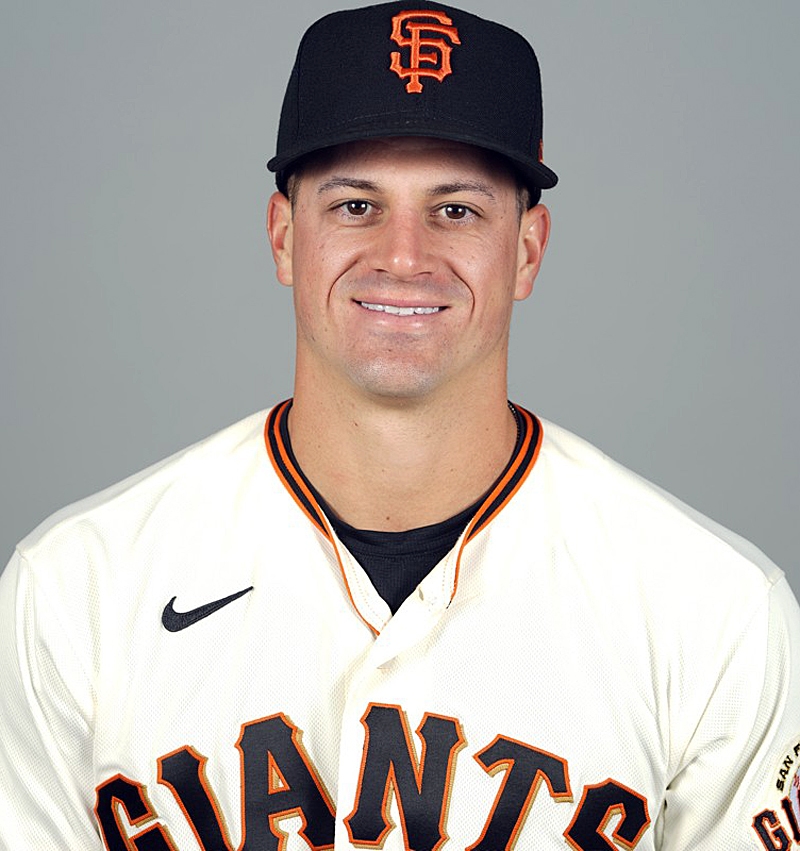
“I learned the ability to compete there (Ohio State), and I can always turn back to that. It definitely helped me learn how to be a better professional.” – Seth Lonsway (2018-2021)
Drafted by the San Francisco Giants after the 2021 season, lefthander Seth Lonsway is learning the ropes of that organization’s minor league system, working to set himself apart as a trusted prospect for bigger, and better things in 2024.
 Columbus, OH – You may not remember Seth Lonsway. Time, and baseball, move on at a pretty rapid rate when it’s your job.
Columbus, OH – You may not remember Seth Lonsway. Time, and baseball, move on at a pretty rapid rate when it’s your job.
But the Celina, Ohio lefthander is still out there, just two years removed from Ohio State, pitching in the San Francisco Giants’ organization, and at age 25 believes that he’s just beginning to touch his potential as a prospect in professional baseball. And his numbers, stats-wise, may bear him out.
He improved, exponentially, in each of his three varsity seasons at Ohio State, his best coming prior to the lost time to Covid in 2019 when he compiled an 8-4 record and a 3.70 ERA over 17 starts. He struck out a Big Ten best 126 hitters that season, and raised anticipation for his being the next best thing in the conference come 2020.
Alas, that didn’t happen, due to Covid. The 2020 season was canned after just three weeks, with Lonsway making just four appearances and posting a 1-2 record over 18 innings.

“The experience I got in college at Ohio State definitely got me ready for the mental resiliency you need at this level.”
In 2021, he pitched better than the record would indicate. He finished 3-5 over 68 innings, but struck out 98 in a season marked by conference-baseball only, no spring training to speak of, or day-to-day routine once the season began.
Still, he was taken in the 6th round of the MLB draft, and within a year (2022) made a splash at San Jose (A ball), pitching 95 innings and recording a 9-3 record in his first professional season.
It’s all good, right?
Think again. In 2023 he was advanced to Eugene, Oregon, the Giants’ High A designation, where his season marked by change in approach, organizational pitch limits, and his numbers reflected that. He went from 9-3 to 2-9 against the better competition, but claims he learned more about how to cope, how to compete, and how to just keep learning.
“I pitched in Eugene last year, didn’t have the numbers that I had in San Jose, but at the end of the season they asked me to pitch in the Arizona Fall League, so that’s a good thing that I was considered for that. I got to compete there against guys who had AA and AAA time, and it was a really good experience for me.
“So going into spring training this year we’ll see where things stand at the end of that. The Giants typically don’t tell you where you’re going to pitch until that last week of spring training, but hopefully I can make that next step. The goal is to keep moving up.”

VPP Industries, from Versailles, Ohio, helps your business grow. Let us help you deliver your message.
Given his history, one might expect for a bounce back this year, wherever he pitches. He’s a ready learn, and in two years he’s absorbed a lot in terms of how pitchers like Kyle Harrison (the Giants top prospect and a lefthanded pitcher) have already advanced so quickly.
“There’s things I need to get better at,” he says. “My first-pitch strike percentage needs to be better. That’s something they’ve identified for me as a means to having more success – a better opportunity at the Double A level, to get guys out.
“We talk about expanding the pitch arsenal. In the past I relied on the two-seam fastball, along with the curve and the fastball. Last year I threw a four-seam fastball more to complement the curveball. And my velocity went up a bit last year.

Lonsway burst onto the Giants scene in 2022 with immediate success – a 9-3 record, pitching 95 innings for Single A San Jose.
“But during the off-season we’ve talked more about working the two-seam and the cutter back into the arsenal…to become a five-pitch pitcher this year. Attack the middle of the plate with both fastballs and just let them work. Going forward this will be my next step…to work all five of those pitches in and focus on first pitch strikes. I’ve never been a one walk per nine innings pitcher, and they understand that, but they’re optimistic that all five pitches can help me become more successful.”
At his level of baseball it’s hard to make the impressive jump that Kyle Harrison has made in three years of professional baseball. Drafted out of high school in 2020, Harrison made 7 big league starts for the Giants last year, pitched a total of 34 innings, and finished with a 1-1 record.
“But I pitched a lot better in the Fall League against a lot of better hitters, so just understanding that I have the ability to do it, and get guys out at this level, is a big confidence boost for me this spring,” says Lonsway. “Kyle Harrison is a little bit different pitcher than me. He throws from a different, lower arm angle, and has different stuff. I think I compare better with some other guys in the organization, where I throw from a higher three-quarter arm angle. His four-seam is really good, he backspins the ball, and it’s a tough pitch for hitters. For me, I think my two-seam is a really good pitch with a lot of run and sink. Our velocity is about the same (94-96). We’re just a little different in terms of how we pitch and how the ball moves.”

Since 2015, the McKinley Funeral Home, in Lucasville, proudly supports Buckeye sports on Press Pros Magazine.com.
Can he make the next step in 2024?
“I’d love to have the opportunity to go to Double A to start the year (Richmond, Virginia), but if I go back to High A you just go with the mindset of making the most of your opportunity. It is what it is.”
When baseball is your job, the internal clock that we all have ticks much faster and with more urgency. Baseball as a profession is reserved for the young and talented, knowing that younger talent is being drafted every year.
He’s durable, and Seth Lonsway is determined. This is a life dream, and he’s in the prime of life, athletically. The tools are there. Just learn to use them, and make the most of the opportunity.
“I’m not at that point yet,” he assures. “I’ve played with guys who’ve already gone through the first round of being with other organizations, and with guys a year older than me. But in my third season I haven’t thought about a timetable yet.”
Mental toughness is a key. Every hitter at this level is as good, or better, than those he faced in college. You throw strikes in college – you execute strikes as a professional!
“But the experience I got in college at Ohio State definitely got me ready for the mental resiliency that you need at this level,” he adds.
“I learned the ability to compete there, and I can always turn back to that. Baseball at this level definitely tests you throughout the season. The wins, the losses, and the learning curve…I went through it in college and it helped me learn how to be a better professional.”

The Arbogast family of dealerships, in Troy, Ohio, is pleased to sponsor your favorite sports on Press Pros.

